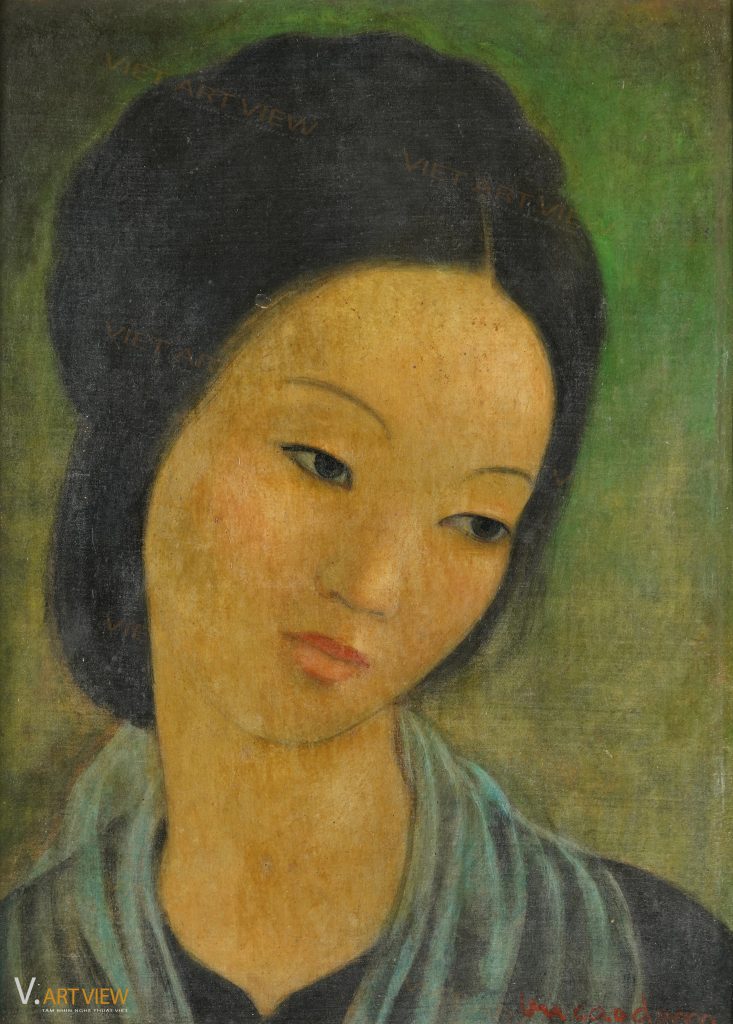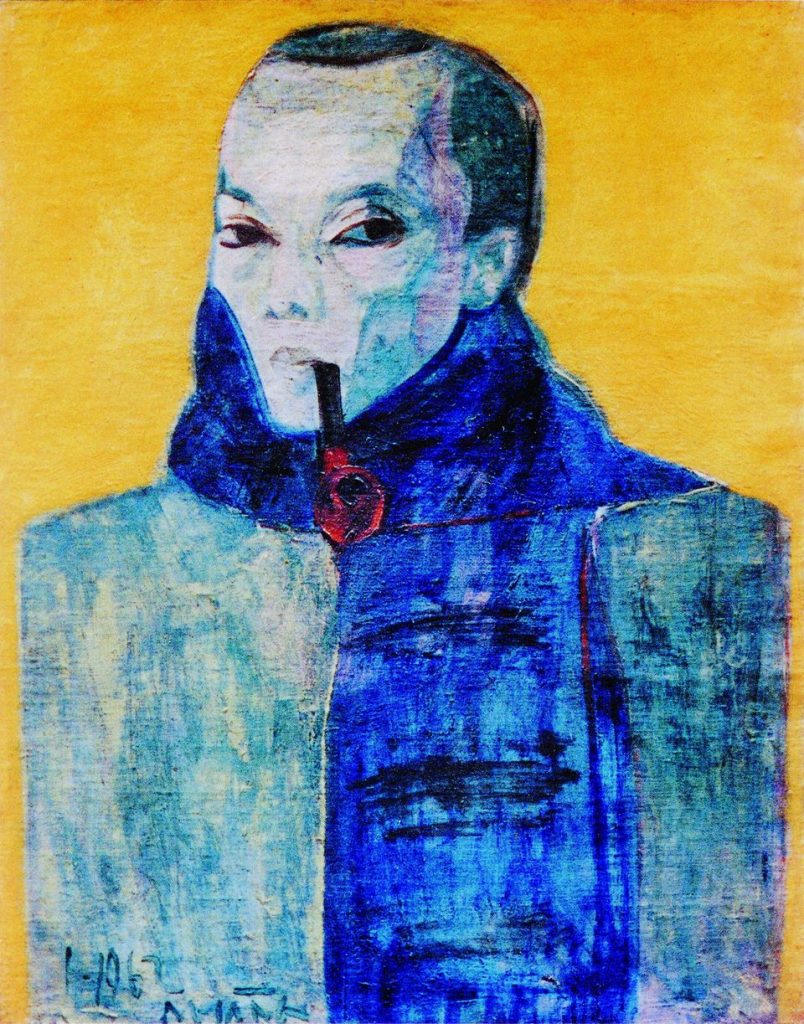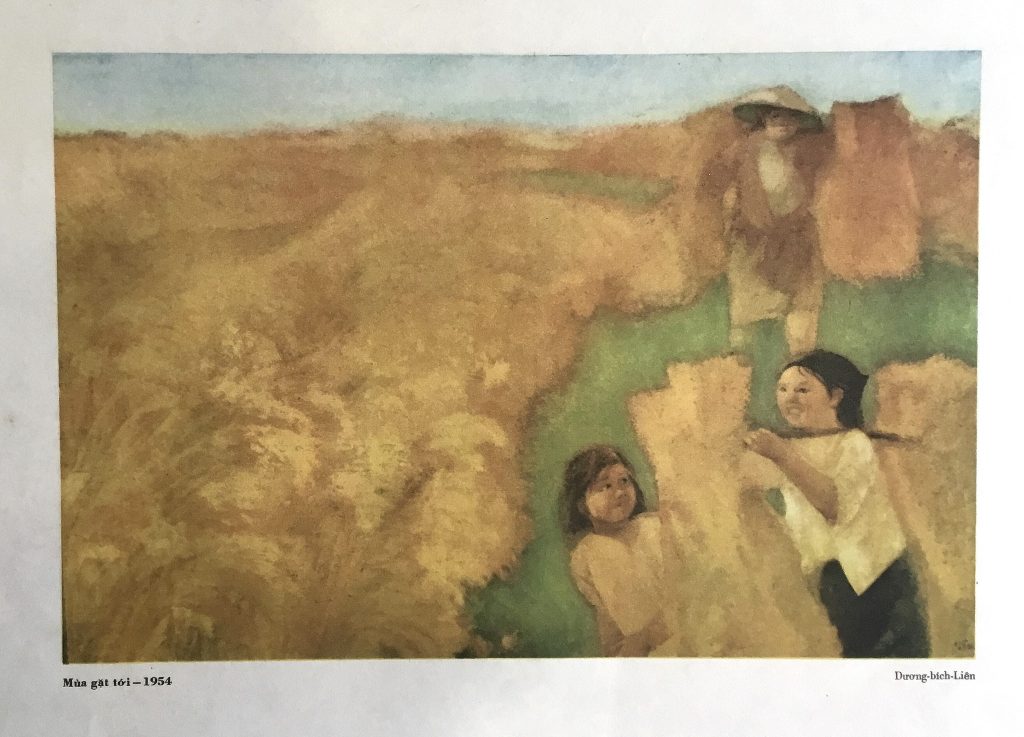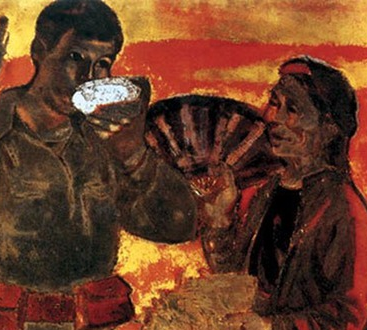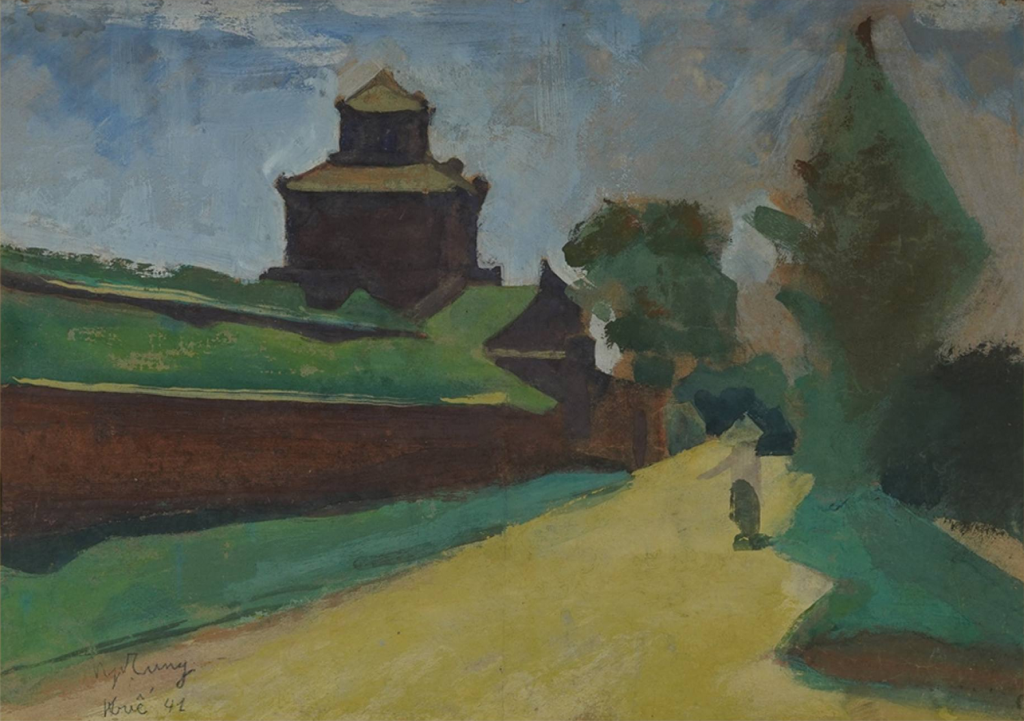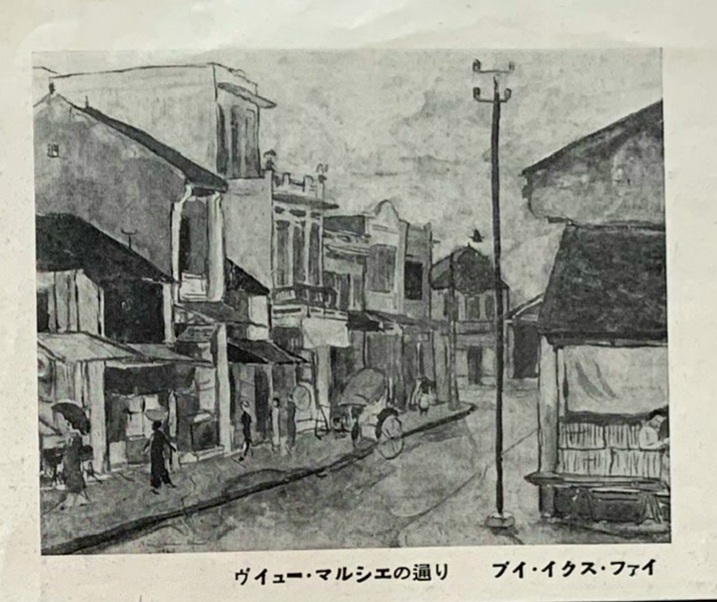On the occasion of celebrating the special day including two major and important ceremonies of the country, Viet Art View send to art lovers a small article about the creation of two lacquer paintings portray President Hồ Chí Minh of artist Văn Bình (1917-2004) and artist Phạm Hậu (1905-1994).
The content of the two paintings used by the two artists is from two original photos (Viet Art View have not found the names of the two Photographers who took the photos) taken during historical moments of the nation with two separated themes. Depending on the theme of the work, the artist is skillful and sophisticated to use it appropriately, highlighting the content, message, story, and context he wants to convey.
Viet Art View respectfully introduce to art lovers.
FROM HISTORICAL PHOTOS TO PAINTINGS WITH ARTISTIC VALUE – HISTORICAL VALUE
Artwork Uncle Hồ during the period of resistance against American of artist Văn Bình (1917–2004)
On November 15, 1965, President Hồ Chí Minh received a delegation of heroes and emulation soldiers of armed forces for the liberation of the South to visit the North. The photo taken of President Hồ Chí Minh with the heroes and emulation soldiers of the South on the path of Mango during that meeting has become one of the symbolic pictures of the solidarity and cohesion between the South and the North; between the leader and the people, with hearts towards the dear South, towards the day of national reunification in 1975.
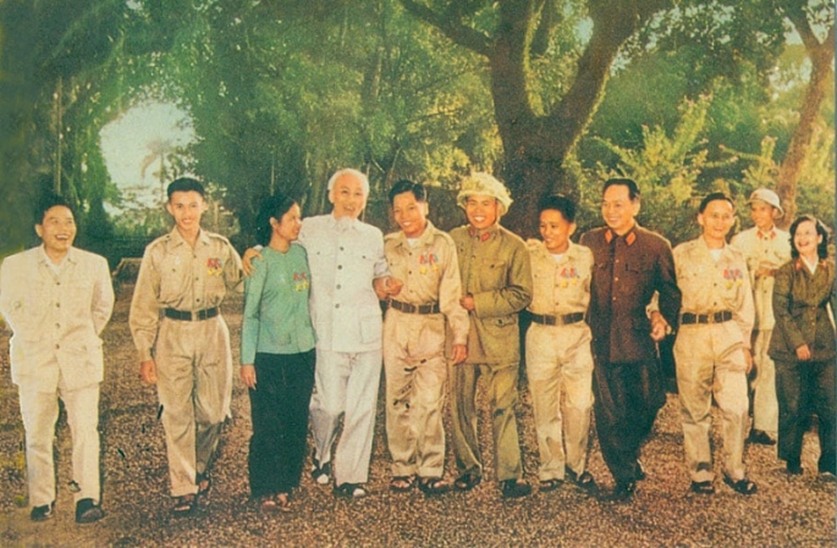
The original photo: President Hồ Chí Minh took photo with Southern soldiers at the path of Mango,
Presidential Palace, November 15, 1965. Source: Tamnhin.trithuc
Then, painter Văn Bình took that as inspiration to create the lacquer painting Uncle Hồ during the period of resistance against American.
Looking at the original photo, we can easily see that Văn Bình added details, changed the exact position of the original photo as well as omitted some characters. On sketches of pencil, watercolors as well as finished lacquer work, the image had changed a lot.
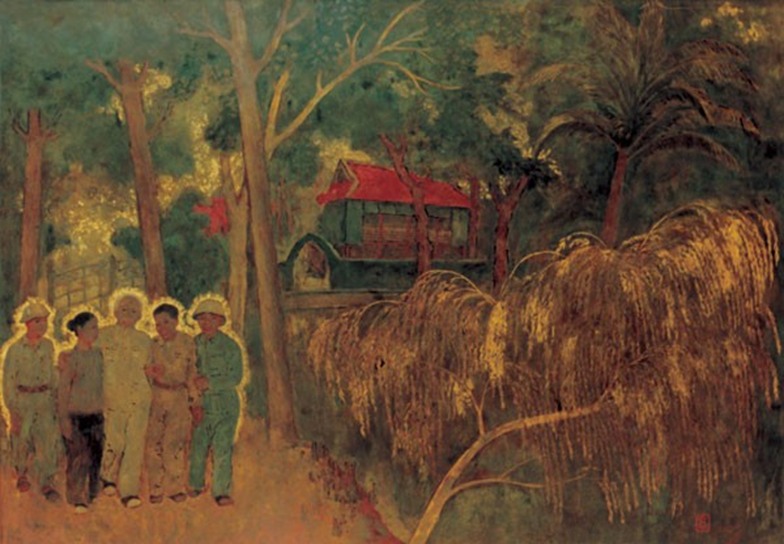
VĂN BÌNH (1907-2004), Uncle Hồ during the period of resistance against American, 1997,
Lacquer, 105×150 cm, Việt Nam Fine Arts Museum Collection
- The place of characters in the original photo is the path of Mango, Presidential Palace. The position in the work is opposite Uncle Hồ’s Stilt House.
- In the original photo, the characters from left to right (according to some documents): Phạm Hùng, Lê Chí Nguyện, Tạ Thị Kiều, President Hồ Chí Minh, Hồ Vai, Huỳnh Văn Đảnh, General Võ Nguyên Giáp, Trần Dưỡng)… But Văn Bình only represented (possibly) comrades Lê Chí Nguyện, Tạ Thị Kiều, President Hồ Chí Minh, Hồ Đức Vai (ie A Vai) and Huỳnh Văn Đảnh. These are brave Southern heroes who made many contributions to the resistance war in the Southern battlefield.
- In addition to the location and characters, the scene details in the original photo have also been featured in the work. He included most of the key images of Presidential Palace area in the painting such as the Stilt House, the bridge in the garden, tall mango trees with wide spreading foliage, rows of coconut trees in front of the stilt house, rows of taxodium growing along the lake, branches of willows spread out over the cool clear water…
From the original photo, under the eyes and visual thinking of the artist – Văn Bình has built a typical and profound picture, depicting two key issues. First, the boundless happiness of the people (represented by soldiers) when meeting the Party leader (represented by President Hồ). Second are the typical images of a place that is both sacred and warm (where the leader lived) with gentle green trees, peaceful space, and warm affection.
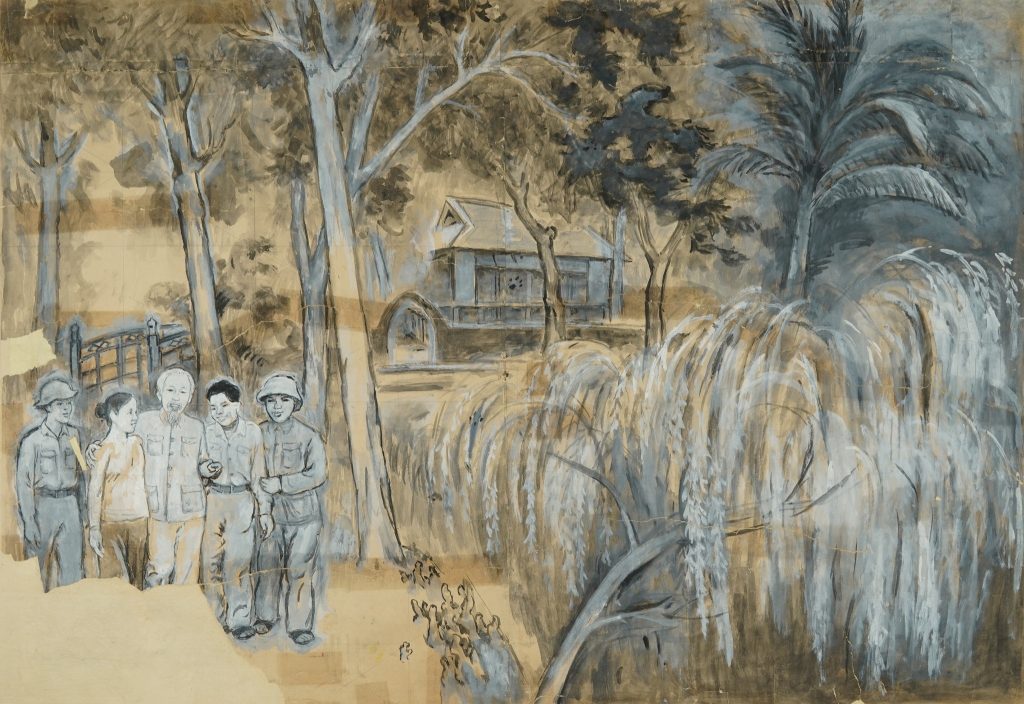
VĂN BÌNH (1907-2004), Uncle Hồ during the period of resistance against American, circa 1990,
Pencil, watercolor on paper, 102×147 cm, Private collection, Hà Nội
Right from the dessin, we can feel Văn Bình’s thoroughness in choosing the theme, building the layout and the meticulous finishing process.
In addition to the iconic images, artist Văn Bình’s excellent technique in using lacquer perfectly makes this possibly one of his most beautiful paintings.
Artwork Remember Uncle for thousand years of painter Phạm Hậu (1905–1994)
The source of the original black and white photo is Việt Nam News Agency. This photo was taken at the time of President Hồ Chí Minh’s funeral in September 1969.
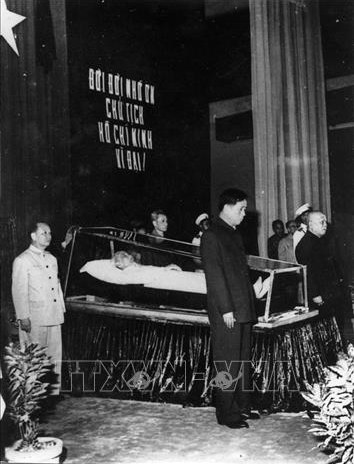
Photo taken at the funeral of President Hồ Chí Minh, around September 6-9, 1969,
Unknown photographer, Source: Việt Nam News Agency
The work Remember Uncle for thousand years was created by artist Phạm Hậu (1905-1994) around 1969-1970, lacquer, dimensions 30×20cm. This is the only work by artist Phạm Hậu on the subject of President Hồ Chí Minh in a very special context.
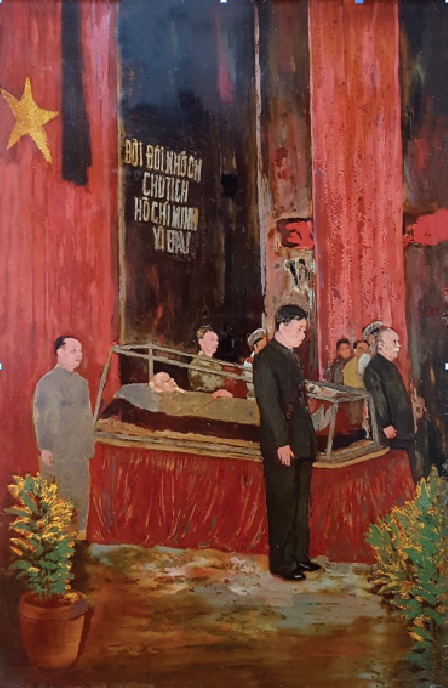
PHẠM HẬU (1905-1994). Remember Uncle for thousand years. Lacquer. 30×20 cm.
Quang Phúc Collection, Hà Nội.
Printed in the book ‘Artist Phạm Hậu’ by author Phạm Gia Yên (son of artist Phạm Hậu).
It can be said that Phạm Hậu had portrayed and conveyed almost exactly the context, layout, and details in the original photo of President Hồ Chí Minh’s funeral. We can see the four highest leaders of Vietnamese State at that time including comrades Tôn Đức Thắng, Lê Duẩn, Trường Chinh and Phạm Văn Đồng. This is true because with a particularly serious subject like this, adapting the original would be the most reasonable and appropriate.
Phạm Hậu used warm, hot, and red color from vermilion of lacquer as the main color; combined with black, gray; For the foreground is two pots of plants, he used physical gold between two green layers, then sanded it away, revealing the gorgeous gold layer, mixed with the cool green to create a light, soft feeling in the solemn, sacred and contemplative atmosphere.
With the meticulous technique of a master in lacquer painting, Phạm Hậu has expressed the details in a subtle way at a high level of perfection. It shows his high level of care, attention, concentration in this particular work. This shows Phạm Hậu’s deep gratitude and respect for President Hồ Chí Minh. This is a special subject, a special painting, worthy of being respectfully recognized and preserved for Vietnamese painting.
Written by Viet Art View
Copyrights belong to Viet Art View


